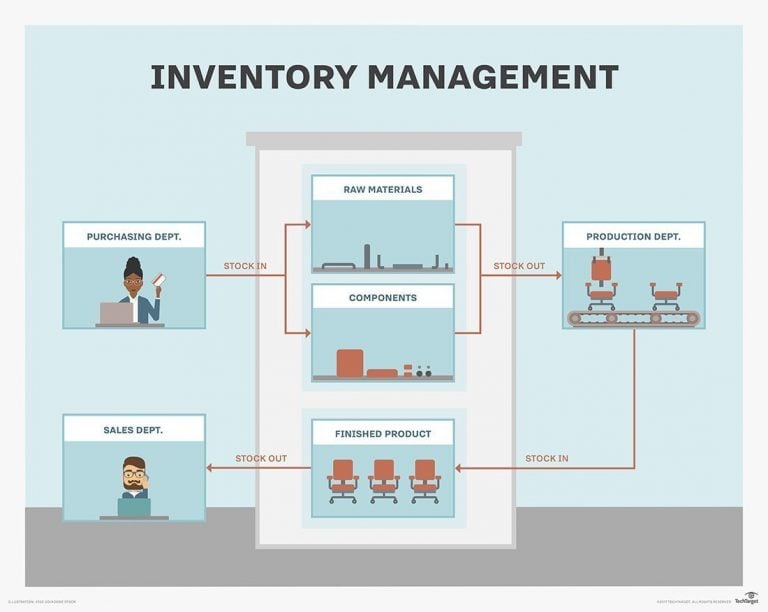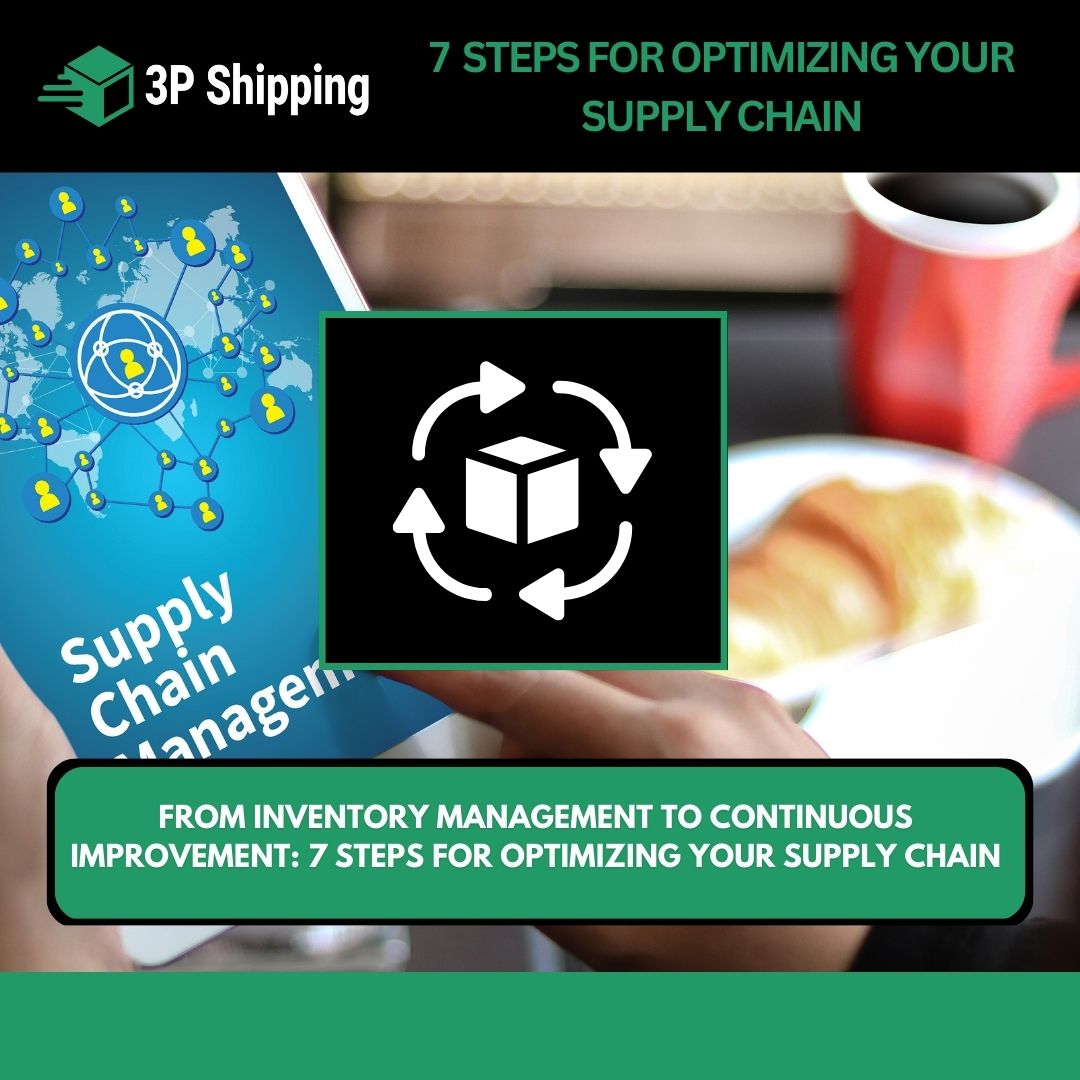ERP Inventory Management: A Comprehensive Guide to Optimizing Your Supply Chain
Introduction
In today’s fast-paced business environment, managing inventory effectively is crucial for businesses to maintain efficiency, reduce costs, and enhance customer satisfaction. Enterprise Resource Planning (ERP) systems play a pivotal role in streamlining inventory management processes, providing real-time visibility, and enabling data-driven decision-making. This comprehensive guide will delve into the world of ERP inventory management, exploring its key benefits, challenges, and best practices.
Understanding ERP Inventory Management
ERP inventory management is a module within an ERP system that centralizes and automates inventory-related processes, from procurement to warehousing to distribution. It provides a single source of truth for inventory data, eliminating the risk of errors and inconsistencies that can occur with manual or decentralized systems.

Benefits of ERP Inventory Management
ERP inventory management offers numerous benefits for businesses, including:
-
Improved Inventory Accuracy: Centralized data and automated processes minimize errors and ensure accurate inventory levels across all locations.
-
Enhanced Visibility: Real-time inventory tracking provides a comprehensive view of inventory levels, allowing businesses to make informed decisions about production, procurement, and distribution.
-
Reduced Costs: Automated processes and optimized inventory levels reduce labor costs, storage costs, and carrying costs.
-
Improved Customer Service: Accurate inventory information enables businesses to fulfill customer orders efficiently, reducing backorders and improving customer satisfaction.
-
Increased Efficiency: Streamlined processes and real-time data access enhance productivity and reduce lead times.

Challenges of ERP Inventory Management
While ERP inventory management offers significant benefits, it also comes with certain challenges:
-
Data Integration: Integrating ERP inventory management with other business systems, such as accounting and CRM, can be complex and time-consuming.
-
System Complexity: ERP systems are complex, and implementing and maintaining them requires specialized expertise and resources.
-
Cost: ERP systems can be expensive to purchase and implement, especially for small businesses.
-
Training: Employees need to be trained on the new system, which can take time and effort.
-
Data Security: Ensuring the security of sensitive inventory data is critical to prevent unauthorized access and potential fraud.

Best Practices for ERP Inventory Management
To maximize the benefits of ERP inventory management, businesses should follow these best practices:
-
Define Clear Inventory Management Goals: Establish specific objectives for inventory management, such as reducing inventory costs, improving customer service, or increasing inventory turnover.
-
Implement Accurate Data Entry Procedures: Establish clear guidelines and processes for entering inventory data to ensure accuracy and consistency.
-
Utilize Inventory Management Tools: Leverage the capabilities of the ERP inventory management module, such as cycle counting, inventory optimization algorithms, and demand forecasting tools.
-
Monitor Inventory Levels Regularly: Track inventory levels closely to identify potential shortages or excesses and take proactive measures to address them.
-
Establish Safety Stock Levels: Determine appropriate safety stock levels to buffer against unexpected demand fluctuations or supply chain disruptions.
-
Optimize Inventory Turnover: Regularly review inventory turnover rates and identify opportunities to reduce excess inventory and improve cash flow.
-
Integrate with Other Business Systems: Connect the ERP inventory management module with other business systems, such as accounting, purchasing, and sales, to ensure data consistency and streamline processes.
Advantages and Disadvantages of ERP Inventory Management
Advantages:
-
Centralized Inventory Data: A single source of truth for inventory data eliminates errors and inconsistencies.
-
Real-Time Visibility: Provides real-time visibility into inventory levels across all locations.
-
Automated Processes: Automates inventory-related processes, reducing labor costs and improving efficiency.
-
Improved Customer Service: Accurate inventory information enables businesses to fulfill customer orders efficiently, reducing backorders and improving customer satisfaction.
-
Enhanced Decision-Making: Provides data and insights to support informed decision-making about production, procurement, and distribution.
Disadvantages:
-
Data Integration Challenges: Integrating ERP inventory management with other business systems can be complex and time-consuming.
-
System Complexity: ERP systems are complex, and implementing and maintaining them requires specialized expertise and resources.
-
Cost: ERP systems can be expensive to purchase and implement, especially for small businesses.
-
Training: Employees need to be trained on the new system, which can take time and effort.
-
Data Security Concerns: Ensuring the security of sensitive inventory data is critical to prevent unauthorized access and potential fraud.
Summary of ERP Inventory Management
ERP inventory management is a powerful tool that can help businesses optimize their supply chains, reduce costs, and improve customer service. By centralizing inventory data, automating processes, and providing real-time visibility, ERP inventory management enables businesses to make informed decisions and respond quickly to changing market conditions.
FAQs on ERP Inventory Management
Q: What is the difference between ERP inventory management and traditional inventory management systems?
A: ERP inventory management is integrated with other business systems, such as accounting and CRM, providing a comprehensive view of inventory data and streamlining processes. Traditional inventory management systems are standalone systems that may not offer the same level of integration and automation.
Q: How can ERP inventory management help businesses reduce costs?
A: ERP inventory management can reduce costs by automating processes, optimizing inventory levels, and reducing the risk of overstocking or understocking.
Q: What are the key challenges of implementing ERP inventory management?
A: The key challenges include data integration, system complexity, cost, training, and data security.
Q: How can businesses ensure the accuracy of inventory data in an ERP system?
A: Businesses can ensure accuracy by implementing clear data entry procedures, conducting regular inventory audits, and leveraging inventory management tools such as cycle counting.
Q: What are the benefits of integrating ERP inventory management with other business systems?
A: Integrating ERP inventory management with other business systems provides a holistic view of business operations, eliminates data inconsistencies, and streamlines processes.
Q: How can ERP inventory management help businesses improve customer service?
A: ERP inventory management provides real-time visibility into inventory levels, enabling businesses to fulfill customer orders efficiently, reduce backorders, and improve customer satisfaction.
Q: What are the key features of an effective ERP inventory management system?
A: Key features include centralized data, real-time visibility, automated processes, inventory optimization tools, and integration with other business systems.
Q: How can businesses optimize inventory turnover using ERP inventory management?
A: ERP inventory management provides insights into inventory turnover rates, enabling businesses to identify opportunities to reduce excess inventory and improve cash flow.
Q: What are the best practices for managing safety stock levels in an ERP system?
A: Best practices include setting appropriate safety stock levels based on historical demand data, considering lead times and supply chain risks, and regularly reviewing and adjusting safety stock levels as needed.
Q: How can ERP inventory management help businesses respond to changing market conditions?
A: ERP inventory management provides real-time visibility into inventory levels and demand trends, enabling businesses to adjust production, procurement, and distribution strategies quickly and effectively.
Q: What are the potential risks associated with implementing ERP inventory management?
A: Potential risks include data security breaches, system downtime, and disruption to business operations during implementation.
Q: How can businesses mitigate the risks associated with ERP inventory management implementation?
A: Businesses can mitigate risks by conducting thorough risk assessments, developing a comprehensive implementation plan, and partnering with experienced ERP implementation consultants.
Conclusion
ERP inventory management is an essential tool for businesses looking to optimize their supply chains, reduce costs, and improve customer service. By leveraging the capabilities of ERP inventory management systems, businesses can gain real-time visibility into inventory levels, automate processes, and make informed decisions to drive growth and success.
Closing Statement
Embracing ERP inventory management is a strategic investment that can transform your supply chain operations. By implementing best practices, mitigating risks, and leveraging the power of technology, you can unlock the full potential of ERP inventory management and drive your business to new heights.
